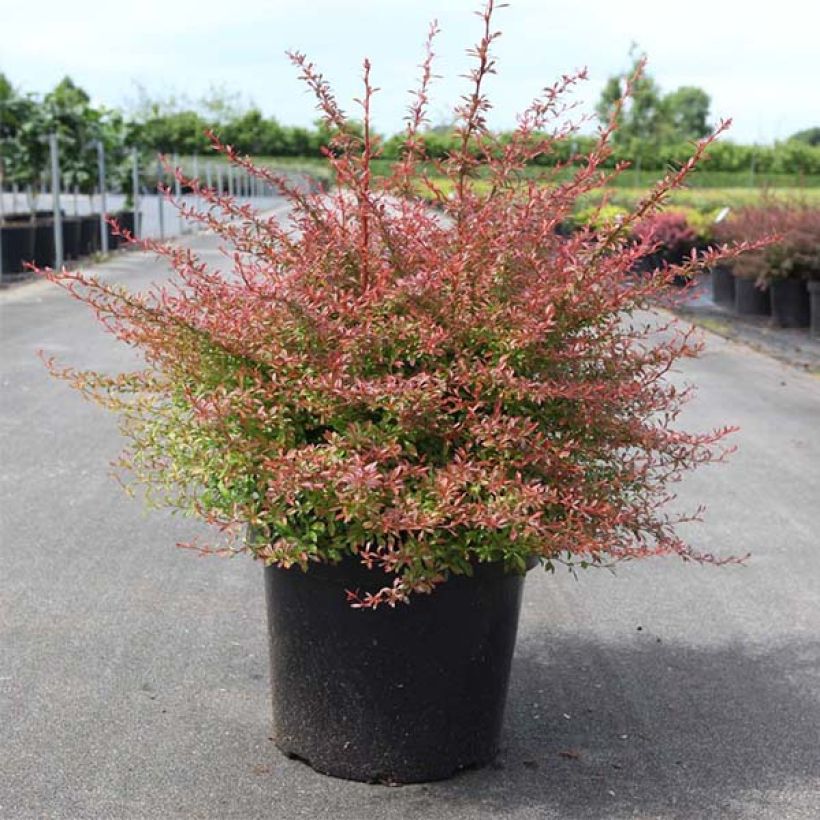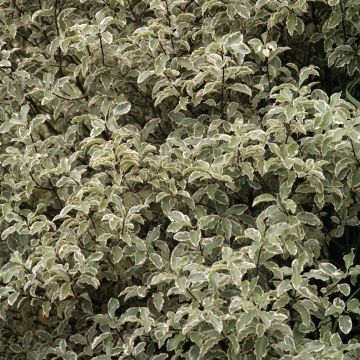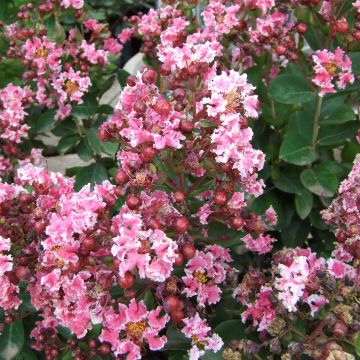

Berberis thunbergii Orange Dream - Barberry


Berberis thunbergii Orange Dream - Barberry
Berberis thunbergii Orange Dream - Barberry
Berberis thunbergii Orange Dream
Japanese Barberry
Beautiful, it is a stunning red in this early spring!
Julia, 28/04/2023
This item cannot be shipped to the selected country
Delivery charge from €5.90
More information
Schedule delivery date,
and select date in basket
This plant carries a 24 months recovery warranty
More information
We guarantee the quality of our plants for a full growing cycle, and will replace at our expense any plant that fails to recover under normal climatic and planting conditions.
From €5.90 for pickup delivery and €6.90 for home delivery
Express home delivery from €8.90.

Does this plant fit my garden?
Set up your Plantfit profile →
Description
Berberis thunbergii Orange Dream is a recent variety of barberry, remarkable for the changing colour of its foliage. Its small leaves are orange at bud break and evolve throughout the season to a more purplish hue before turning red-orange in autumn. This very rich and unusual colour of the foliage beautifully highlights its small orange flowers in spring, and then its bright red berries in late summer. It has a low growth habit, and its spreading habit is particularly graceful when used as ground cover or in a small mixed hedge.
The Berberis thunbergii, also known as Japanese barberry, is a bush of the Berberidaceae family native to Japan. It is characterized by a bushy, spreading, and low habit, and deciduous foliage which is almost evergreen in mild climates.
The Czech cultivar 'Orange Dream', introduced in 2012, will quickly reach a height of 90cm (35.4in) with a spread of 1.20m (3.94 ft). The puplish branches are semi-arching and semi-erect in this variety with non-aggressive thorns. The foliage is the main asset of this barberry. It consists of smaller leaves than those of other varieties, measuring 1 to 2cm (0.4 - 0.8in) long and obovate (ovate, the upper part of the leaf wider than the lower part). At bud break, they show a soft orange-pink colour, then as they mature, they turn purple. In April-May, numerous clusters of 1 to 6 small flowers bloom on 1-year-old stems. The bell-shaped flowers, 1cm (0.4in) long, are golden orange streaked with red. They are highly nectar-rich and are followed in September-October by small bright red, round fruits, 6 to 8 mm (0.2 - 0.3in) long, which persist on the branches for part of the winter. The foliage takes on a beautiful reddish-orange colour before falling.
Thunberg's barberry is a very accommodating shrub in terms of soil, tolerating pruning very well but preferring sunny exposures. It is a shame to confine it to the role of a monochrome and anonymous defensive hedge shrub; although it fulfills its mission perfectly, its personality is stifled and its naturally graceful habit is completely obscured. Its beautiful foliage, remarkable in some cultivars like 'Orange Dream', deserves a prominent place in front of larger shrubs with pink flowers (Kolkwitzia, Abelia, Abeliophyllum distichum Roseum), red flowers (Japanese quince, roses, Weigelas), or even yellow to orange flowers (Kerria japonica, Genista Lena Orange, Honeysuckle Dropmore Scarlett). It can also be paired with the grey foliage of shrubby Artemisias or Convolvulus cneorum. This shrub can also be planted in large rockeries to cover slopes or highlight the edge of a pathway. It also thrives when grown in a large container to adorn a terrace or balcony.
Report an error about the product description
Berberis thunbergii Orange Dream - Barberry in pictures




Plant habit
Flowering
Foliage
Botanical data
Berberis
thunbergii
Orange Dream
Berberidaceae
Japanese Barberry
Cultivar or hybrid
Other Berberis - Barberries
Planting and care
Berberis thunbergii Orange Dream thrives in full sun or partial shade, with autumn colours being more intense in the sun. It is a plant that tolerates drought and harsh winters. Plant it in any type of soil as long as it is well-drained. The planting hole should be twice the size of the root ball. Space the Berberis about 80cm (31.5in) apart, add compost and water well. It is a bush that tolerates pruning very well. From June to August, after flowering, trim the faded branches level with the young lateral shoots to encourage the growth of new branches. Be careful not to touch the branches with bare hands as they have thorns that are difficult to remove once they penetrate the skin. Berberis Thunberg can be susceptible to powdery mildew and black leaf spots. Aphids can also infest it.
Planting period
Intended location
Care
-
, onOrder confirmed
Reply from on Promesse de fleurs
Hedge shrubs
Haven't found what you were looking for?
Hardiness is the lowest winter temperature a plant can endure without suffering serious damage or even dying. However, hardiness is affected by location (a sheltered area, such as a patio), protection (winter cover) and soil type (hardiness is improved by well-drained soil).

Photo Sharing Terms & Conditions
In order to encourage gardeners to interact and share their experiences, Promesse de fleurs offers various media enabling content to be uploaded onto its Site - in particular via the ‘Photo sharing’ module.
The User agrees to refrain from:
- Posting any content that is illegal, prejudicial, insulting, racist, inciteful to hatred, revisionist, contrary to public decency, that infringes on privacy or on the privacy rights of third parties, in particular the publicity rights of persons and goods, intellectual property rights, or the right to privacy.
- Submitting content on behalf of a third party;
- Impersonate the identity of a third party and/or publish any personal information about a third party;
In general, the User undertakes to refrain from any unethical behaviour.
All Content (in particular text, comments, files, images, photos, videos, creative works, etc.), which may be subject to property or intellectual property rights, image or other private rights, shall remain the property of the User, subject to the limited rights granted by the terms of the licence granted by Promesse de fleurs as stated below. Users are at liberty to publish or not to publish such Content on the Site, notably via the ‘Photo Sharing’ facility, and accept that this Content shall be made public and freely accessible, notably on the Internet.
Users further acknowledge, undertake to have ,and guarantee that they hold all necessary rights and permissions to publish such material on the Site, in particular with regard to the legislation in force pertaining to any privacy, property, intellectual property, image, or contractual rights, or rights of any other nature. By publishing such Content on the Site, Users acknowledge accepting full liability as publishers of the Content within the meaning of the law, and grant Promesse de fleurs, free of charge, an inclusive, worldwide licence for the said Content for the entire duration of its publication, including all reproduction, representation, up/downloading, displaying, performing, transmission, and storage rights.
Users also grant permission for their name to be linked to the Content and accept that this link may not always be made available.
By engaging in posting material, Users consent to their Content becoming automatically accessible on the Internet, in particular on other sites and/or blogs and/or web pages of the Promesse de fleurs site, including in particular social pages and the Promesse de fleurs catalogue.
Users may secure the removal of entrusted content free of charge by issuing a simple request via our contact form.
The flowering period indicated on our website applies to countries and regions located in USDA zone 8 (France, the United Kingdom, Ireland, the Netherlands, etc.)
It will vary according to where you live:
- In zones 9 to 10 (Italy, Spain, Greece, etc.), flowering will occur about 2 to 4 weeks earlier.
- In zones 6 to 7 (Germany, Poland, Slovenia, and lower mountainous regions), flowering will be delayed by 2 to 3 weeks.
- In zone 5 (Central Europe, Scandinavia), blooming will be delayed by 3 to 5 weeks.
In temperate climates, pruning of spring-flowering shrubs (forsythia, spireas, etc.) should be done just after flowering.
Pruning of summer-flowering shrubs (Indian Lilac, Perovskia, etc.) can be done in winter or spring.
In cold regions as well as with frost-sensitive plants, avoid pruning too early when severe frosts may still occur.
The planting period indicated on our website applies to countries and regions located in USDA zone 8 (France, United Kingdom, Ireland, Netherlands).
It will vary according to where you live:
- In Mediterranean zones (Marseille, Madrid, Milan, etc.), autumn and winter are the best planting periods.
- In continental zones (Strasbourg, Munich, Vienna, etc.), delay planting by 2 to 3 weeks in spring and bring it forward by 2 to 4 weeks in autumn.
- In mountainous regions (the Alps, Pyrenees, Carpathians, etc.), it is best to plant in late spring (May-June) or late summer (August-September).
The harvesting period indicated on our website applies to countries and regions in USDA zone 8 (France, England, Ireland, the Netherlands).
In colder areas (Scandinavia, Poland, Austria...) fruit and vegetable harvests are likely to be delayed by 3-4 weeks.
In warmer areas (Italy, Spain, Greece, etc.), harvesting will probably take place earlier, depending on weather conditions.
The sowing periods indicated on our website apply to countries and regions within USDA Zone 8 (France, UK, Ireland, Netherlands).
In colder areas (Scandinavia, Poland, Austria...), delay any outdoor sowing by 3-4 weeks, or sow under glass.
In warmer climes (Italy, Spain, Greece, etc.), bring outdoor sowing forward by a few weeks.























































